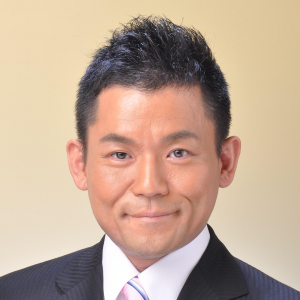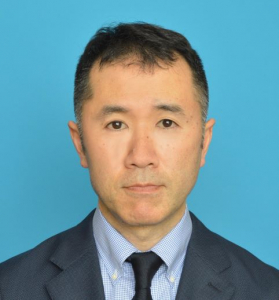
- Article
- Political and Diplomatic History
The Heisei Era in Review: A Political and Diplomatic Assessment
March 26, 2019
In April 2019, the curtain will fall on the Heisei era after three turbulent decades. Beginning in 1989, the year the Berlin Wall was demolished, Heisei was an era of profound global and domestic transformation ushered in by the end of the Cold War and the rise of globalization. At a recent Foundation forum, three noted experts in domestic politics and foreign affairs exchanged insights into the dynamics of this period and identified key challenges facing Japan in the years ahead. The following was compiled from presentations delivered on October 16, 2018.
Heisei Democracy and Fiscal Reform
Masato Shimizu
The Road to Top-Down Leadership
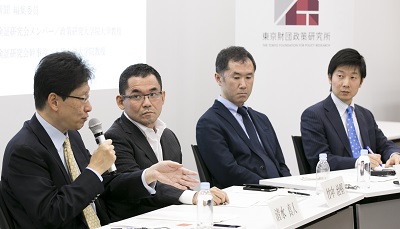
In the three decades of the Heisei era, Japan has been through 17 prime ministers. Lasting less than two years on average, the Heisei leaders do not give an impression of strength or longevity overall. But the second half of the period witnessed the rise of two conspicuously strong and durable prime ministers: Jun’ichiro Koizumi (in office April 2001–September 2006) and Shinzo Abe (September 2006–September 2007 and December 2012–present). From the standpoint of domestic politics, I believe that the most important trend of the Heisei era was the advent of a strong prime minister, which in turn was facilitated by the multi-faceted political and administrative reforms of the 1990s. This is what I refer to as “Heisei democracy.”
The early years of the Heisei era, which began in 1989, were a time of great upheaval. Internationally, they witnessed the fall of the Berlin Wall and the end of the Cold War. Domestically, they saw the collapse of the 1980s asset bubble and brought the nation face to face with the daunting challenge of revitalizing the economy amid an aging and shrinking population and a ballooning public debt. To address these problems, it was felt, would require a massive shift in public policy and a bold reallocation of resources. This sense of crisis was the force behind the political and electoral reforms of the mid-1990s and the administrative reforms adopted by the cabinet of Ryutaro Hashimoto (January 1996–July 1998).
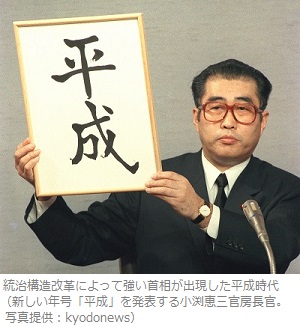
Perhaps the most consequential of all these reforms was the adoption of single-seat electoral districts for the House of Representatives, replacing the old multi-seat constituencies. The new system raised the stakes for parties and voters, since there could only be one winner in each district. On the one hand, it meant a larger number of wasted votes. On the other hand, it made it easier for strong voter sentiment to sweep a party into or out of power. After four decades of almost uninterrupted rule by the Liberal Democratic Party, the new system put both the LDP and the opposition on notice that the status quo could change at any time.
The lower house electoral reforms had a profound impact on the internal dynamics of the LDP, which had always functioned as a federation of factions. Under the old system, which allocated between three and five seats to most districts, it was advantageous for the LDP to run multiple candidates in a district. This setup intensified competition between factions, which vied with one another to raise election funds, recruit strong candidates, and boost their numerical strength within the party. With single-seat constituencies, the LDP had to settle on one candidate in each district. This weakened the influence of the factions and encouraged the centralization of power within the LDP executive council, which decided which politicians to back and controlled the distribution of campaign funds.
The LDP leader chosen to be the “face of the party” in the first lower house election under the new system was not a faction leader, as was customary, but Ryutaro Hashimoto, whose strength derived largely from his popularity with the public. Hashimoto’s drive to strengthen the prime minister’s executive powers might have been a historical inevitability. The administrative reforms passed under the Hashimoto cabinet (though most did not come into effect until 2001) included the establishment of the Council on Economic and Fiscal Policy under the Cabinet Office, the creation of a mechanism for a review of high-level appointments by the prime minister and his staff, and expansion of the planning, policymaking, and coordinating powers of the Cabinet Secretariat. Together, these measures served to centralize executive power and facilitate top-down political control over Japan’s powerful but highly sectionalist bureaucracy.
Factionalism and time-consuming consensus building had been hallmarks of the LDP’s style since the party was founded in 1955. The reforms of the 1990s paved the way for a fundamental shift in party politics by enabling an individual politician to secure a popular mandate through a general election and leverage that support to exercise decisive top-down leadership. And this is precisely what Prime Minister Jun’ichiro Koizumi proceeded to do. In a break with decades of LDP tradition, he appointed his cabinet by fiat, ignoring the wishes of the faction bosses. He even bypassed the LDP Policy Affairs Research Council—through which powerful lobbies were accustomed to making their voices heard—in drafting such key policies as privatization of the postal system. The drama climaxed in 2005, when Koizumi, faced with a mutiny within the LDP, dissolved the House of Representatives and called a snap election as a referendum on his postal privatization plan. The voters rallied to his side, and postal reform was enacted.
Koizumi was followed by a rapid succession of short-lived prime ministers—three of them from the LDP and another three from the DPJ, which ousted the LDP from power in the 2009 general election. None were able to overcome the gridlock of a divided Diet, though, even with the added clout of their office, and all stepped aside in about a year. However, following the collapse of the DPJ in 2012, Shinzo Abe returned to lead an LDP-led coalition that took control of the House of Councillors the following year, thus ending the era of political gridlock. After that, Abe surpassed even Koizumi in his consolidation and exercise of executive power.
The question we must ask now is whether policymaking has improved substantially as a result. Taken as a whole, the reforms of the Heisei era are still half-baked due to political compromise and inconsistencies that emerged as measures were phased in over time. Have the reforms been a failure, or do they simply need some more seasoning? I would like to explore this question in relation to the overarching policy challenge of fiscal reform.
Heisei Democracy and Fiscal Sustainability
How have the Heisei reforms affected the government’s ability to tackle the central policy challenge of our time—ensuring the sustainability of government finances while meeting the social-security needs of our rapidly aging society?
In 1995, when the Japanese government announced a fiscal crisis, the national debt stood at about 200 trillion yen. Today, 15 years later, it has grown more than fourfold to around 900 trillion yen. During most of this time, Japan’s gross domestic product has hovered in the neighborhood of 500 trillion yen. Even if the government manages to reach its GDP target of 600 trillion yen, the fact remains that the national debt has grown at a much faster pace than the economy. Under the circumstances, it is difficult to make the case that the Heisei reforms have enabled our leaders to rein in the government’s ballooning budget deficits.
That said, I would not go so far as to say that the reforms of the past two decades were pointless or irrelevant. Ultimately, there are only two ways to trim the deficit: increase revenues or hold down expenditures. It is almost impossible to hold down expenditures without the power to impose spending caps on a top-down basis, as through a rigorous, itemized review of each ministry’s budget requests. In the years when the Hashimoto and Koizumi cabinets were imposing such limits, the deficit was indeed shrinking.
Abe, on the other hand, has been accused of indulging in unrestrained largesse to win voter support. I do not think this is a fair assessment. The Abe cabinet has, after all, imposed some constraints on social security spending. The problem is that costs for healthcare and nursing care are rising inexorably as the population ages and are poised to skyrocket as Japan’s baby boomers hit their mid-seventies. This is the single most important dynamic driving our growing deficits. The government cannot simply slash healthcare services without regard for the human consequences. In the final analysis, it has no choice but to secure a stable source of revenue going forward.
There is widespread agreement that the consumption tax is the only practical option for raising this kind of revenue in a manner that distributes the burden fairly across the generations. But as we have seen, such an unpopular policy has been extremely hard to implement when reelection is on the line.
In 2012, after years of fierce interparty rivalry, including a historic change of government, the DPJ reached an agreement with the then-opposition LDP and the Komeito to legislate scheduled consumption-tax increases in the name of “integrated reform of the social security and tax systems.” At the time, I believed that the passage of the law had removed the issue from the contentious arena of politics and established it as an element of “common ground” that would stand regardless of the party in power.
But that was not to be. In the end, the agreement fell victim to Abe’s political strategy for boosting his party’s majority and extending his own tenure through a series of snap elections paired with promises to delay the tax increase and reallocate the tax’s revenues.
I see now that, in an era in which any general election can sweep the current governing party from power, even a national law falls short as a commitment to higher taxes. After all, a new government with a Diet majority can simply step in and change the law. I realize now that a more powerful mechanism was needed to make that commitment binding.
Why the Prime Minister Is Still Too Weak
Harukata Takenaka
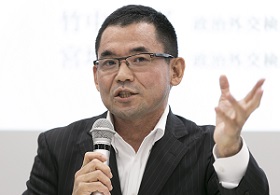
As explained in the preceding presentation, the powers of the prime minister have expanded during the course of the Heisei era. Viewed objectively, though, Japan’s prime ministers are still severely constrained in the exercise of their executive powers. The constraints are institutional in nature, deriving from the powers of the Diet—particularly the House of Councillors—to control the legislative agenda.
It is true that the reforms of the Heisei era have facilitated top-down leadership by the prime minister. But Heisei was also a time in which the House of Councillors flexed its muscles, raising questions about the powers that the Constitution bestows on the upper house.
A fundamental pillar of a parliamentary system is the relationship between the executive and legislative branches. The cabinet’s executive power depends on the confidence of the legislature. At the same time, the cabinet has the power to dissolve the legislature and call an election if it loses that support. In Japan, this is precisely the relationship that exists between the cabinet and the House of Representatives. However, it is not the relationship that exists between the cabinet and the House of Councillors. The cabinet does not derive its power from the confidence of the House of Councillors, and it has no power to dissolve that chamber.
Under the Constitution of Japan, the powers of the House of Representatives are superior to those of the House of Councillors—but not by that much. When it comes to designation of the prime minister, passage of the budget, and approval of treaties, the lower house clearly has precedence. But when it comes to nonbudget legislation, a decision by the upper house is difficult to override. If the upper house rejects a bill passed by the House of Representatives, the lower house needs a two-thirds majority to override the decision made by the upper house to enact the bill. And it is no easy matter for the ruling party to secure a two-thirds majority in the House of Representatives.
The Upper House Flexes Its Muscles
The power of the House of Councillors to obstruct the political process first became apparent after the first upper house election of the Heisei era, held in July 1989. Reeling from the Recruit scandal, public backlash over the consumption tax (adopted in April the same year), and a sex scandal that engulfed Prime Minister Sosuke Uno (June–August 1989) soon after he took office, the LDP suffered a major setback in the House of Councillors election, winning just 36 seats. It lost almost 40% of its pre-election strength to end up with just 109 out of 252 upper house seats—well below a majority. The staunchly pacifist Japan Socialist Party, led by a triumphant Takako Doi, was the main beneficiary of the LDP’s setback, capturing 46 seats. The LDP was forced to enlist the cooperation of the smaller opposition parties to advance its legislative agenda. It was the dawn of divided government in Japan.
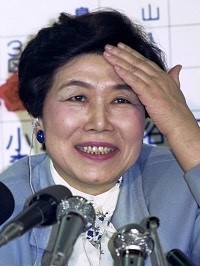
The consequences were most starkly revealed in the government’s efforts to create a legal framework for participation in international peacekeeping operations following the public-relations disaster of the Gulf War. Hoping to cobble together the necessary majority in the upper house, the LDP sought the cooperation of the Komeito and Democratic Socialist Party, both of whom demanded major revisions. After months of frustrating negotiations, first under Prime Minister Toshiki Kaifu (August 1989–November 1991) and then under Prime Minister Kiichi Miyazawa (November 1991–August 1993), the LDP caved in. The PKO Law (Act on Cooperation for United Nations Peacekeeping Operations and Other Operations) that was passed in June 1992 incorporated most of the revisions demanded by the opposition.
The House of Councillors again took center stage following the upper house election of July 12, 1998. In the wake of the 1997 Asian financial crisis, the Japanese economy had slowed dramatically, and the Hashimoto cabinet came under attack for economic mismanagement. In the July 1998 election, the LDP’s upper house strength fell to 103, and Hashimoto stepped down to take responsibility for the defeat. On July 30, Keizo Obuchi took the helm and almost immediately faced an emergency requiring decisive policy action.
Since June that year it had been rumored that the Long-Term Credit Bank of Japan was near collapse. Concerned that the bank’s failure could trigger a financial meltdown, the government submitted emergency legislation to stabilize the financial system with help of a new bridge-bank system designed to oversee an orderly liquidation. Lacking a majority in the House of Councillors, the government needed at least some support from the opposition. But the opposition parties, flush from their gains in the House of Councillors, banded together and dug in their heels.
The Democratic Party of Japan, the Liberal Party, and the Peace and Reform parliamentary group called for temporary nationalization of the LTCB in place of the proposed bridge-bank system. They also opposed any bailout at the taxpayers’ expense; the bank should be allowed to fail. The three opposition groups submitted their own financial stabilization bill, and after discussions with the party leaders, Obuchi basically accepted the opposition’s ultimatum. The financial stabilization system initially proposed by the LDP was revised, and it became illegal to use public funds to bail out financial institutions. The LTCB was declared insolvent and temporarily taken over by the government that October.
The Diet: Rethinking an Unreformed Institution
Another major factor constraining Japan’s prime minister is the strong institutional autonomy of the Diet. Emblematic of this relationship is the extraordinary frequency with which the prime minister is obliged to attend the Diet when it is in session.
Although the cabinet is the source of most legislation submitted to the Diet, the cabinet has virtually no control over the legislative process once the bill is submitted. This is because the Diet enjoys a very high degree of autonomy with regard to the conduct of parliamentary business. The steering committees of the two chambers, comprising members of the opposition as well as the ruling parties, determine the order in which bills are deliberated, the scheduling of votes on the floor, and other procedural matters that can make or break legislation. Chairpersons and senior directors of standing committees also have substantial powers in determining the procedures for deliberations of the bills assigned to the committees.
It is often assumed that members of the opposition are the ones taking advantage of these procedural powers, but I believe that they are more often wielded by ranking non-cabinet lawmakers in the ruling party who wish to sabotage a bill without openly breaking ranks. By manipulating the agenda, they can delay deliberations until the Diet session is over, essentially hobbling the cabinet’s ability to implement its policies.
In the past, LDP cabinets generally avoided such obstruction from within by giving party members an opportunity to review all cabinet bills before they were submitted to the Diet. This doubtless averted parliamentary snafus, but it also functioned to block or eviscerate meaningful reforms before they ever reached the Diet floor. What, then, is the answer?
In the Heisei era, Japan adopted a whole range of reforms aimed at bringing its parliamentary system closer to the Westminster model by strengthening the powers of the cabinet under the prime minister’s leadership. If this is indeed our aim, I believe that the next step is to give the cabinet more power to control the legislative agenda. The British system does this by recognizing the right of the prime minister, as the head of the cabinet, to introduce a “program motion,” which sets a firm timetable for deliberation and action on a given bill. This would make it impossible to sabotage legislation through manipulation of the agenda.
The reforms of the Heisei era transformed Japan’s electoral system and reorganized the administrative branch of government. But the Diet as an institution remained unchanged. As I see it, the time has come to reassess the legislative branch, including the relationship between the two chambers, and turn our attention to reform of the Diet.
Foreign Policy and Party Politics in the Heisei Era
Taizo Miyagi
Farewell to the Post–Cold War Era
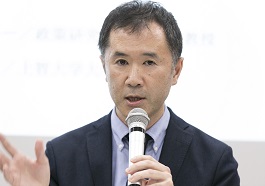
Today I would like to examine the interplay between foreign policy and domestic party politics during the three decades of the Heisei era, which coincided closely with the post–Cold War period.
As we approach the end of the Heisei era, the post–Cold War period is also drawing to a close. I view the defining concept of the post–Cold War era as the vision of a “new world order” articulated in the early 1990s by US President George H.W. Bush. In an address to the UN General Assembly in September 1991, shortly after the victory of the US-led multinational force in the Gulf War, Bush heralded the dawn of a new order built, with American support, on such Western values as freedom and the rule of law.
A quarter of a century later, in January 2017, Donald Trump took office as president of the United States, after running on an unapologetically nationalist “America first” platform. As I see it, the rise of America-first nationalism, displacing the vision of a unipolar Americentric world order, signals the end of the post–Cold War era.
Political Realignment and Security Policy
In contrast with the “1955 system” of the Cold War period, the post–Cold War Heisei era was a time of repeated regime changes and shifting coalitions. The only time during the Heisei era that the LDP governed single-handedly, without the benefit of a coalition, was at the beginning of the Obuchi cabinet. In the following, I would like to briefly examine the connections between Japanese security policy and the political flux of the past three decades.
Under the cabinet of Prime Minister Kiichi Miyazawa, the drive to pass legislation facilitating Japan’s active participation in international peacekeeping operations fractured the left-center opposition alliance among the SDP, Komeito, and DSP and provided the impetus for cooperation between the LDP and the centrist opposition, represented by the Komeito and DSP.
In 1993, the LDP lost control of the government for the first time since 1955, following the defection of a splinter group led by Ichiro Ozawa. The anti-LDP coalition that took over, led first by Morihiro Hosokawa (August 1993–April 1994) and then by Tsutomu Hata April–June 1994) was inherently unstable. However, its dissolution was hastened by the North Korean nuclear crisis of 1993–94, which highlighted irreconcilable policy differences—particularly between the SDP and Ozawa’s Japan Renewal Party—centered on Japan’s response to a hypothetical contingency in the region.
Ironically, by the time Ozawa maneuvered behind the scenes to restructure the coalition around a more consistent stance on security policy, the North Korean crisis had essentially dissipated, allowing the LDP and the SDP to paper over their deep differences on security and enter into an unlikely coalition headed by SDP leader Tomiichi Murayama.
Murayama resigned in January 1996, and the LDP’s Hashimoto formed another LDP-SDP-Sakigake coalition cabinet. Once again, however, the coalition partners fell out over security policy, specifically, the US military presence in Okinawa. The LDP itself was deeply divided over the partnership, with the party’s hawks calling instead for a new conservative coalition. Once again, the defining issue was Japanese security policy under the postwar Constitution.
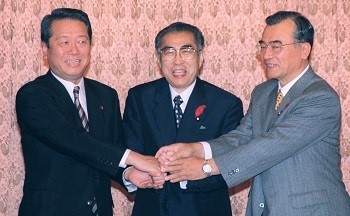
Under the Obuchi cabinet, the LDP worked with the conservative Liberal Party (headed by Ozawa) and the centrist Komeito to secure approval for a package of bills to expand the role of the SDF under the revised Guidelines for Japan-US Defense Cooperation. The United States, concerned about escalating tensions on the Korean Peninsula, had been anxious to implement the new guidelines, but the Hashimoto cabinet had been unable to advance the bills in the face of SDP opposition.
From the standpoint of ideology and security policy, the LDP-LP-Komeito alliance seemed inherently more stable than its predecessors. In this instance, the main obstacle to a lasting relationship was Ozawa, who feared a loss of influence, and in 1999, his Liberal Party merged with the fast-growing DPJ.
Jumping ahead to 2007, Prime Minister Shinzo Abe’s decision to step down in September that year, barely a year after he took office (for the first time), is commonly attributed to health issues. However, by his own testimony, Abe viewed his resignation as a condition for passage of the Anti-Terrorism Special Measures Law, which the DPJ (under Ozawa’s leadership) had continued to block. In a press conference on September 12, Abe stated that “my aim should be for the fight against terrorism to continue under the leadership of a . . . new prime minister.”[1] When asked to explain, he said that “due to the fact that I am currently serving as prime minister, a situation has arisen that makes it difficult to conduct discussions with the head of the opposition party.”
In September 2009, Yukio Hatoyama took office as prime minister in the wake of the DPJ’s decisive victory in the August 30 general election. Lacking a majority in the House of Councillors, the DPJ was obliged to enter into an alliance with the SDP and the People’s New Party. However, the SDP withdrew from the coalition after Hatoyama backtracked on his election pledge to find a replacement site for Marine Corps Air Station Futenma outside of Okinawa Prefecture and instead endorsed a controversial 2006 plan to relocate the base to Henoko, a less populated area in Okinawa. Hatoyama resigned in 2010 to take responsibility for the coalition’s collapse.
The 1955 system that persisted until 1993—with the right-leaning, pro-US LDP at the helm and the leftist, pacifist Socialists dominating the opposition—closely mirrored the international environment of the Cold War in terms of its stability and clear ideological battle lines. The new international challenges that confronted Japan amid the changing environment of the post–Cold War period were key factors precipitating the continual realignment of political forces during the Heisei era.
Amid these shifting allegiances, the coalition between the LDP and the Komeito has proven remarkably durable. The biggest reason for this sustainability is doubtless the political behavior of the Komeito. Unlike the SDP, which was inclined to bolt each time it came into conflict with a coalition partner, the Komeito has stuck with the LDP, even amid disagreements over security policy and the Constitution. This has been an important key to the coalition’s stability.
Meeting the Challenge of Neighborhood Diplomacy
In terms of challenges for the coming era, I would like to say a few words about national identity and foreign policy. After the Meiji Restoration, Japan identified itself as the sole non-Western country among the world’s major powers. From 1968 on, the nation took pride in its status as the world’s second largest economy, after the United States. For 42 years, that number-two position was central to Japan’s self-image as a member of international society.
Meeting with newly elected President Barack Obama in February 2009, Prime Minister Taro Aso told the press corps, “Nowadays there are so many issues we will have to fight against, and we are the number one and second biggest economies of the world; we will have to work together, hand in hand.”[2] Yet the very next year Japan ceded its number-two position to China. Now Japan must forge a new identity and a new role within the international community. It seems to me that the development of a coherent foreign policy in the coming era hinges on this issue of Japanese identity.
In its relations with China and the Korean Peninsula, Japan must navigate a minefield of hot-button territorial and historical issues. Moreover, while few in Japan deny the importance of maintaining a strong partnership with the United States, there is no such consensus concerning our ties with China, the Korean Peninsula, and the rest of East Asia. Building such a consensus will be an important task for Japanese diplomacy going forward.
In January 2000, Prime Minister Obuchi’s Commission on Japan’s Goals in the Twenty-First Century issued a final report provocatively titled “The Frontier Within” (in Japanese, “Nihon no furontia wa Nihon no naka ni aru”). On the subject of China and South Korea, the commission called for “relationships of greater depth,” using the termed rinko, or neighborly relations, to distinguish these ties from “foreign relations” in the conventional sense. “In order to develop relationships of long-term stability and trust with China and Korea,” it argued, “the ordinary diplomatic efforts that we have conducted to date are not sufficient. . . . We need a national commitment. This is the nature of the ‘neighborly relations’ we are proposing.”[3] It is a concept worth reviving.
[1] https://japan.kantei.go.jp/m-magazine/backnumber/2007/0913.html
[2] https://www.govinfo.gov/content/pkg/PPP-2009-book1/pdf/PPP-2009-book1-doc-pg145-2.pdf
[3] https://www.kantei.go.jp/jp/21century/report/overview.html
